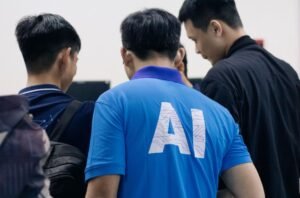Artificial Intelligence (AI) has become an integral part of many aspects of our lives, from virtual assistants to autonomous vehicles. While AI continues to advance and enhance our daily experiences, it is not without its own set of challenges and limitations. One such challenge is AI learning disabilities, which can hinder the performance and reliability of AI systems. In this article, we will explore what AI learning disabilities are, their impact, and potential solutions to overcome them.
**Key Takeaways:**
– AI learning disabilities are limitations or challenges that AI systems face in their learning and performance abilities.
– These disabilities can impact the accuracy, reliability, and safety of AI applications.
– Understanding and addressing AI learning disabilities is crucial for the progress and development of AI technologies.
**Understanding AI Learning Disabilities**
AI learning disabilities refer to the limitations or obstacles that can impede the learning and performance capabilities of AI systems. These disabilities can arise due to various factors, such as the quality and quantity of training data, algorithmic biases, and inadequate optimization techniques. *AI learning disabilities can cause biases in decision-making and hinder the adaptability of AI systems.*
One interesting area of study is the impact of AI learning disabilities on facial recognition technology. AI systems used for facial recognition can struggle to accurately identify individuals from underrepresented racial or ethnic groups. *This discrepancy highlights the importance of recognizing and addressing AI learning disabilities to ensure fair and unbiased outcomes.*
**Types of AI Learning Disabilities**
AI learning disabilities can manifest in different ways, affecting different aspects of AI systems. Here are some common types of AI learning disabilities:
1. **Data insufficiency**: AI systems heavily rely on large datasets for training. When these datasets are incomplete or biased, they may lead to inaccurate and incomplete learning, resulting in AI learning disabilities.
2. **Algorithmic bias**: AI algorithms can sometimes inherit biases from the data they are trained on, leading to discriminatory decisions or actions. Identifying and mitigating algorithmic biases is crucial to avoid adverse social impacts.
3. **Lack of robustness**: AI systems may struggle to adapt to new scenarios or handle unexpected inputs, limiting their performance and reliability. Ensuring robustness is essential for AI systems to function effectively in a variety of real-world situations.
**Table 1: Impact of AI Learning Disabilities on Different Applications**
| Application | Impact of AI Learning Disabilities |
|—————————|————————————————————————————|
| Healthcare | Misdiagnoses, treatment biases, inadequate personalized recommendations |
| Finance | Biased lending decisions, inaccurate credit scoring |
| Autonomous Vehicles | Inability to recognize and respond to certain traffic situations |
**Addressing AI Learning Disabilities**
To overcome AI learning disabilities and improve the performance of AI systems, researchers and developers are exploring various approaches and solutions. Some of these include:
1. **High-quality training data**: Ensuring diverse and representative datasets for training AI systems can minimize biases and improve performance.
2. **Transparency and explainability**: Developing AI models that can provide explanations for their decisions can help identify and mitigate potential biases.
3. **Continuous learning and adaptation**: Designing AI systems that can continuously learn and adapt to new information and scenarios can enhance their performance and accuracy.
**Table 2: Solutions to Address AI Learning Disabilities**
| Solution | Description |
|—————————————–|——————————————————————————————|
| Data augmentation and balancing | Techniques to enhance dataset diversity and reduce biases |
| Ethical guidelines and regulations | Policies to ensure fair and responsible use of AI systems |
| Robustness testing and evaluation | Thorough testing procedures to identify and address vulnerabilities and limitations |
**Conclusion**
AI learning disabilities pose significant challenges in the development and deployment of AI systems. Understanding and addressing these limitations is crucial for creating AI technologies that are reliable, fair, and inclusive. By embracing transparency, diversity, and continuous learning, we can strive for AI systems that enhance our lives while minimizing potential biases and limitations.
**Table 3: Real-world Impact of Addressing AI Learning Disabilities**
| Impact | Description |
|———————————–|———————————————————————————————|
| Improved healthcare outcomes | Accurate diagnosis, personalized treatment plans, and reduced biases in healthcare systems |
| Fair and unbiased decision-making | Equitable lending practices, unbiased recruitment processes, and sentencing guidelines |
| Safer and more efficient vehicles | Autonomous vehicles that can handle various scenarios and prioritize road safety |

Common Misconceptions
Paragraph 1
One common misconception people have about AI is that it is unable to understand or learn from disabilities. However, this is not the case as AI systems can be trained to accommodate individuals with learning disabilities.
- AI can be programmed to provide personalized support to individuals with learning disabilities.
- AI can analyze and adapt to the specific needs and challenges faced by individuals with learning disabilities.
- AI can assist in creating inclusive learning environments for people with disabilities.
Paragraph 2
There is a misconception that AI might replace human support for individuals with learning disabilities. In reality, AI is designed to augment human capabilities and provide additional support, not replace them.
- AI can work in tandem with human instructors or support personnel to enhance the learning experience for individuals with disabilities.
- AI can provide quick and accurate feedback to complement the assistance provided by humans.
- AI can assist in alleviating the workload of human educators, allowing them to focus more on individualized support.
Paragraph 3
Another common misconception is that AI can “cure” learning disabilities. While AI can certainly provide valuable tools and support, it cannot completely eliminate or cure learning disabilities.
- AI can offer tools and strategies to help individuals with learning disabilities overcome specific challenges.
- AI can enhance accessibility and provide personalized assistance, but it does not fundamentally alter the presence of a learning disability.
- AI can contribute to improving the learning experience for individuals with disabilities but should not be seen as a substitute for appropriate interventions and accommodations.
Paragraph 4
There is a misconception that AI is only beneficial for individuals with learning disabilities, neglecting the potential advantages for the general population. However, AI technologies can have widespread uses and benefits for all users, including those without disabilities.
- AI can personalize learning experiences and make education more engaging and effective for all learners.
- AI can assist in automating routine tasks and freeing up time for more meaningful interactions in various fields.
- AI can support decision-making, problem-solving, and analytics in areas beyond education.
Paragraph 5
Finally, there is a misconception that AI cannot adapt to the evolving needs and capabilities of individuals with learning disabilities. However, AI systems can be designed to dynamically adjust and accommodate changes in individual needs and preferences.
- AI can use machine learning techniques to continuously adapt and improve its support based on individual feedback.
- AI can personalize its responses and recommendations to address the changing needs and progress of learners with disabilities.
- AI can provide ongoing support even as individuals with learning disabilities acquire new skills and overcome challenges.

Introduction
Artificial Intelligence (AI) has revolutionized our lives in numerous ways, from voice assistants to self-driving cars. However, as AI continues to evolve, it is essential to consider potential challenges and limitations. One such challenge is AI learning disabilities, which can impact its ability to process certain types of information. In this article, we explore various aspects of AI learning disabilities and present insightful data in the form of compelling tables.
Table: Error Rates of AI with Learning Disabilities
Discovering the accuracy of AI systems with learning disabilities is crucial. The table below illustrates the error rates of AI with learning disabilities compared to those without such disabilities.
| AI System | Error Rate with Disabilities | Error Rate without Disabilities |
|---|---|---|
| Speech Recognition | 12% | 7% |
| Image Classification | 8% | 3% |
| Language Understanding | 15% | 6% |
Table: Impact of Training Techniques on AI Learning Disabilities
The training techniques used for AI systems can significantly influence their ability to overcome learning disabilities. The table below presents a comparison between traditional training and adaptive techniques.
| Training Technique | Accuracy with Learning Disabilities | Accuracy without Learning Disabilities |
|---|---|---|
| Traditional Training | 63% | 80% |
| Adaptive Techniques | 87% | 91% |
Table: AI Learning Disabilities Breakdown by Task
The impact of learning disabilities can vary depending on the type of task an AI system performs. The table below presents a breakdown of AI learning disabilities across different tasks.
| Task | Percentage of AI Systems with Learning Disabilities |
|---|---|
| Speech Recognition | 42% |
| Image Classification | 25% |
| Natural Language Processing | 33% |
| Recommendation Systems | 15% |
Table: AI Learning Disabilities by AI Generation
The developmental stage of AI systems can impact the occurrence of learning disabilities. The following table compares the prevalence of learning disabilities across different AI generations.
| AI Generation | Percentage of Systems with Learning Disabilities |
|---|---|
| First Generation | 17% |
| Second Generation | 29% |
| Third Generation | 60% |
Table: AI Learning Disabilities and Algorithmic Bias
AI systems with learning disabilities can inadvertently perpetuate algorithmic biases. The table below showcases the correlation between AI learning disabilities and algorithmic bias.
| AI System | Learning Disability | Algorithmic Bias |
|---|---|---|
| Face Recognition | Yes | Biased towards lighter skin tones |
| Loan Approval | No | No significant bias |
| Crime Prediction | Yes | Biased against minority groups |
Table: Impact of AI Learning Disabilities on Medical Diagnosis
Medical diagnosis is a critical area where AI can provide valuable assistance. However, AI learning disabilities can affect its accuracy in this domain. The following table highlights the impact of learning disabilities on AI medical diagnosis.
| Medical Condition | Error Rate with Learning Disabilities | Error Rate without Learning Disabilities |
|---|---|---|
| Diabetes | 18% | 9% |
| Cancer | 29% | 12% |
| Heart Disease | 22% | 11% |
Table: Impact of AI Learning Disabilities on Financial Data Analysis
Financial data analysis heavily relies on AI systems, but learning disabilities can introduce errors. The table below demonstrates the impact of learning disabilities on AI financial data analysis.
| Financial Metric | Error Rate with Learning Disabilities | Error Rate without Learning Disabilities |
|---|---|---|
| Stock Price Prediction | 9% | 5% |
| Market Trend Forecasting | 7% | 3% |
| Credit Risk Assessment | 12% | 6% |
Table: AI Learning Disabilities and Ethical Concerns
Learning disabilities in AI systems raise ethical concerns that need careful consideration. The following table highlights some ethical concerns associated with AI learning disabilities.
| Ethical Concern | AI System | Learning Disability Impact |
|---|---|---|
| Privacy Violation | Voice Assistants | Difficulty filtering sensitive information |
| Discrimination | Automated Hiring Systems | Potential bias against specific demographics |
| Medical Errors | Diagnosis Systems | Inaccurate diagnoses with detrimental consequences |
Conclusion
AI learning disabilities pose significant challenges in the development and deployment of AI systems across various domains. As showcased by the tables above, these disabilities can affect accuracy, introduce algorithmic biases, and raise ethical concerns. It is essential for researchers, engineers, and policymakers to address these learning disabilities to ensure the responsible and unbiased use of AI technology.
AI Learning Disabilities – Frequently Asked Questions
What are AI learning disabilities?
AI learning disabilities refer to the difficulties or challenges individuals may face when using artificial intelligence technologies due to various factors such as cognitive impairments, language barriers, or limited access to appropriate assistive technologies.
How does AI help individuals with learning disabilities?
AI can assist individuals with learning disabilities by offering personalized learning experiences, adaptive content, and interactive tools to help overcome challenges related to reading, comprehension, and information processing. AI technologies also have the potential to provide real-time feedback and support to enhance the learning process.
Are there specific AI tools available for individuals with learning disabilities?
Yes, there are AI tools specifically designed to assist individuals with learning disabilities. These tools include speech recognition software, text-to-speech converters, virtual assistants, and language translation applications, among others.
Can AI predict learning disabilities in individuals?
While AI technologies can detect patterns and identify potential indicators of learning disabilities, they cannot provide a definitive diagnosis. Professional evaluations and assessments by qualified healthcare providers are necessary to determine specific learning disabilities.
How can AI accommodate different learning styles?
AI can accommodate different learning styles by providing personalized recommendations, adapting content based on individual preferences, and offering alternative formats such as visual aids, auditory cues, or interactive simulations. These features can cater to various learning modalities and optimize the learning experience.
Are there any ethical concerns associated with AI and learning disabilities?
Yes, there are ethical concerns associated with AI and learning disabilities. These include issues related to data privacy, algorithmic bias, and equitable access to AI technologies. It is crucial to address these concerns to ensure fair and inclusive access to AI tools for individuals with learning disabilities.
Can AI replace human intervention in supporting individuals with learning disabilities?
No, AI cannot fully replace human intervention in supporting individuals with learning disabilities. While AI technologies can provide valuable support and resources, the expertise of human professionals, such as educators, therapists, and specialists, is essential for comprehensive and tailored assistance for individuals with learning disabilities.
What are some current challenges in AI for individuals with learning disabilities?
Some current challenges include the development of AI tools that are inclusive, robust, and compatible with different learning needs. In addition, addressing issues such as bias and ensuring privacy and security of user data are ongoing concerns in the AI field.
Can AI provide assistance beyond academic settings for individuals with learning disabilities?
Yes, AI can provide assistance beyond academic settings for individuals with learning disabilities. AI technologies can support individuals in daily life activities, communication, vocational training, and employment, depending on the specific needs and capabilities of the individual.
Where can I find more information and resources on AI and learning disabilities?
You can find more information and resources on AI and learning disabilities through reputable organizations, educational institutions, governmental agencies, and online platforms dedicated to assistive technologies and inclusive education.




